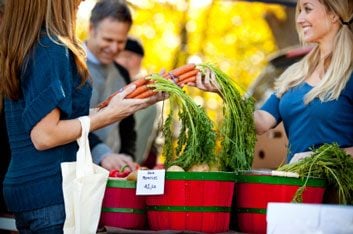
How to eat locally
There are lots of advantages to eating food that’s been grown or raised close to home. Shorter shipping distances mean lowered greenhouse gas emissions and, often, reduced packaging. Buying locally produced food also boosts the local economy. And eating a local diet can foster a stronger connection to your food source.
Although there’s no conclusive evidence that locally grown food is safer or more nutritious, what we do know is that these shoppers enjoy other health benefits. “Consumers who choose a local diet tend to prepare their foods from scratch, and are less likely to use prepackaged convenience foods,” says registered dietitian Carole Chang, who works as a public health nutritionist with the Leeds, Grenville and Lanark District Health Unit in Ontario. “Homemade food tends to be lower in sodium and fat and higher in whole grains.”
Despite the benefits, it’s not always easy to eat locally. Read on for solutions to common snags that will help you add more homegrown food to your menu.
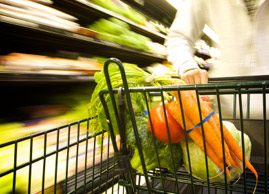
Snag: Buying local food can be expensive
Solution: Local food produced on a smaller scale may sometimes carry a higher price tag than the imports. But it’s not a hard-and-fast rule. Many nutrient-packed fruits and veggies that are easy to store, like apples, carrots and potatoes, are also easy on the wallet. Buying frozen or canned local foods may also keep your grocery bill low, or loading up on produce at the height of the season when it’s most available and cheapest. Local eggs and lentils will pack a protein punch for less money than locally raised meat.
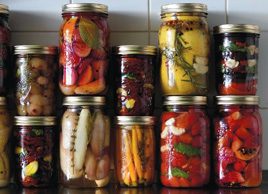
Snag: Many fruits and vegetables are only in season at certain times of the year
Solution: Preserve seasonal produce in your own kitchen by freezing or canning it, and you’ll enjoy local peaches in the depths of December. (Tips: Blanche your veggies – boil them in water for a couple of minutes, then immerse them in cold water to stop them cooking – to preserve colour and texture in the freezer. For fruits that turn brown when frozen, dip them first in 1/3 cup of lemon juice diluted with four cups of water.)
Some local foodies suggest embracing the seasonal cycles instead of resenting them. You can learn to look forward to the first strawberries of early summer and the frost-nipped turnips of fall.
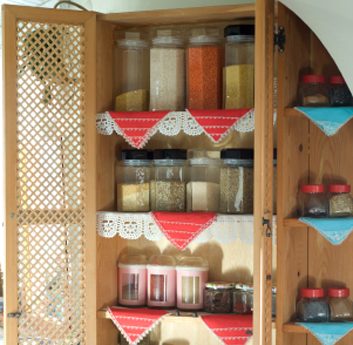
Snag: Your storage space is limited
Solution: Don’t have an industrial-sized freezer? Cut away the parts of the veggies you don’t plan to eat, like broccoli stems, and chop the rest into pieces. They’ll take less freezer space. And keep in mind that some fruits and vegetables can simply be stored in a cool area, like a basement. “You can put your apples, squash and pumpkins in cold storage,” says Change. “Those kinds of things last for a really long time.”

Snag: It isn’t always obvious at the store which foods are local
Solution: A recent survey funded by Industry Canada found that customers are willing to buy more local produce, but they have trouble figuring out which foods on the grocery shelves fall into this category. Shop at farmers’ markets, or ask your grocer questions. Consider joining a community-shared agriculture (CSA) network in your area, like The Good Food Box in Victoria or FoodShare in Toronto. You’ll receive an assortment of fresh produce that comes straight from local farms.
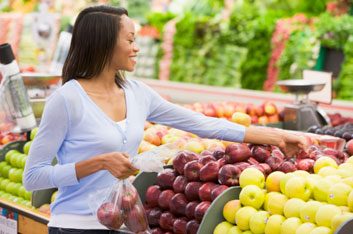
Snag: There aren’t enough options for eating locally
Solution: That’s changing. As awareness of the benefits increases, you can find more information about where to find locally produced food, and how to prepare and preserve it. And as more consumers choose produce and meats from their own communities, the price and availability of these foods will improve. What else helps: when large institutions like colleges and hospitals choose local producers. Recently, The Scarborough Hospital in east-end Toronto announced a new menu for patients that includes ingredients grown on Ontario farms. “They’re buying in bulk,” says Chang, “so they have a lot more purchasing power.”

Snag: Your fave foods are never produced nearby
Solution: Any reduction in shipping distance helps. If you can’t live without cherries and they’re not grown in your province, fruit from B.C.’s Okanagan Valley is still a better choice than cherries shipped from Chile. “It doesn’t have to be that 100-mile diet,” says Chang. “We just say the closer the better. Local for you could be within your county, or it could mean food grown in your province. Even food grown in Canada is more local when compared to food imported from other countries.”
What if you’re bananas for bananas? Give yourself a break. “It’s not realistic to live on completely local food, because we can’t grow oranges and bananas in Canada,” Chang says. “We don’t expect people to stop eating those foods.”
Related:
• 5 habits for eco-friendly food shopping
• 5 tricks to waste less food
• The 5 best foods to grow at home
